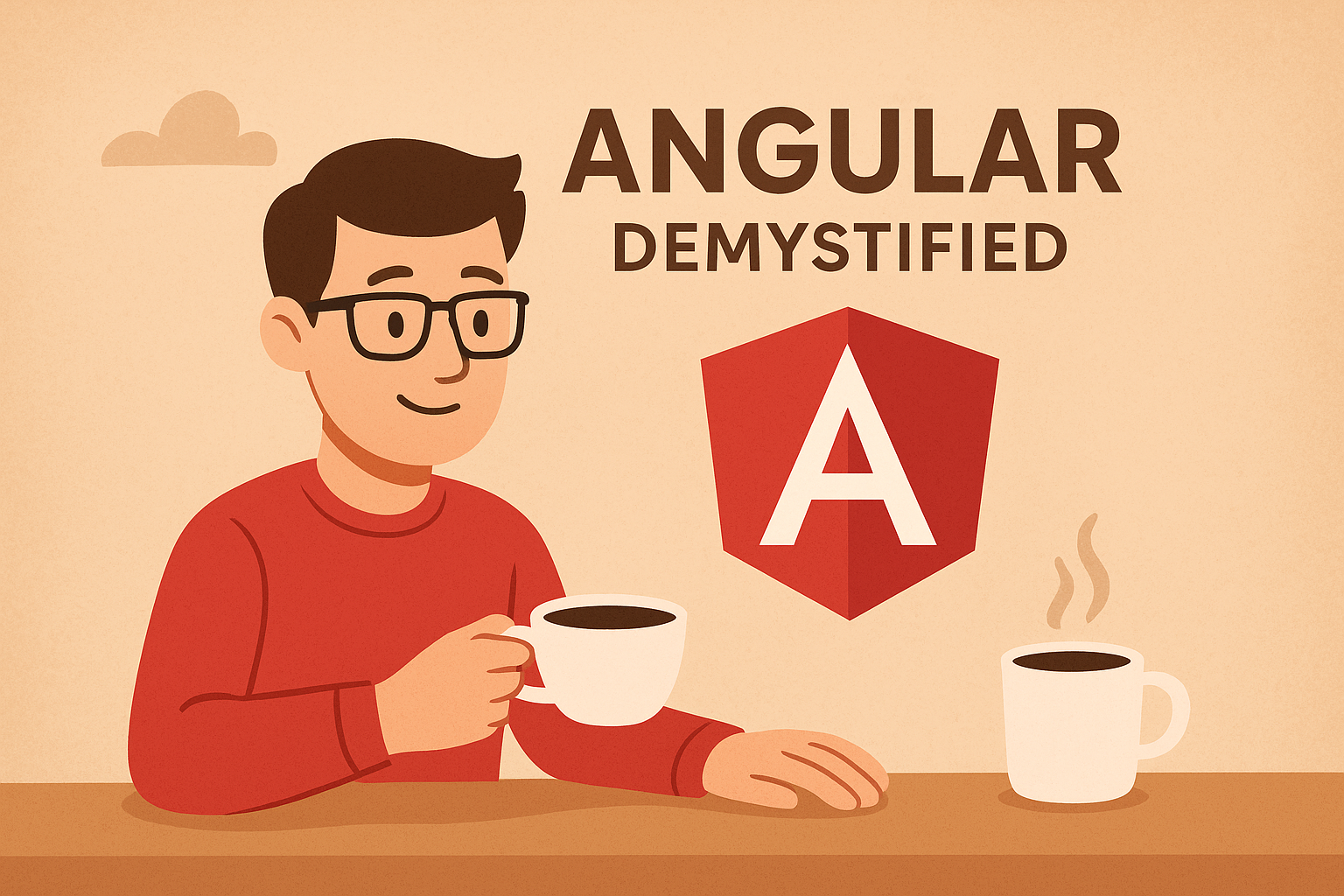Ever met a technology that’s both your best friend and a bit of a know-it-all?
That’s Angular.
It’s the front-end framework that wants to hold your hand through everything… but sometimes makes you feel like you’re in a serious relationship with your codebase.
Today, let’s break it down — no jargon overload, no lifeless explanations. Just you, me, and a hot cup of coffee talking about Angular.
What Even Is Angular?
Think of Angular as a well-organized city for your web app.
You’ve got roads (routes), buildings (components), services (your invisible helpers), and laws (TypeScript rules). Everything has its place, and nothing happens without a plan.
Developed and maintained by Google, Angular isn’t just another JavaScript framework. It’s a complete toolkit for building dynamic, single-page applications (SPAs). You don’t have to go hunting for extra libraries — Angular comes loaded with routing, HTTP handling, forms, and even built-in testing tools.
Why Do Developers Love (and Sometimes Fear) It?
Love:
-
Structure → Everything’s neatly organized.
-
TypeScript → Catch bugs before your code even runs.
-
Two-Way Data Binding → Your UI updates automatically when your data changes.
Fear:
-
Learning Curve → The initial setup can feel like studying for finals.
-
Too Opinionated → Angular sometimes says, “Nope, do it my way.”
-
Big Bundle Sizes → Though tree-shaking helps, it’s still chunkier than some frameworks.
Key Angular Concepts (Without the Sleep-Inducing Lecture)
1. Components: The Building Blocks
Your Angular app is basically a Lego set.
Each component is a piece — with its own HTML, CSS, and TypeScript logic.
Example:
2. Modules: Your App’s Filing Cabinets
Modules (like AppModule) keep related components, directives, and services grouped.
It’s Angular’s way of saying, “Let’s keep things tidy.”
3. Services & Dependency Injection
Got a task that needs doing across multiple parts of your app?
Put it in a service.
Need to use it somewhere? Angular politely injects it for you — no wrestling with global variables.
4. Routing: Your App’s GPS
Want to move from /home to /about without a page reload?
Angular Router’s got you covered — fast and smooth.
When to Use Angular (and When to Swipe Left)
Use Angular if:
-
You’re building a large-scale application.
-
You need built-in tooling for forms, HTTP, and testing.
-
You love TypeScript and strict structure.
Maybe pass if:
-
You’re making a small, quick project.
-
You prefer minimal setup and a lighter framework (like React or Vue).
Pro Tips for a Smooth Angular Experience
-
Start Small → Don’t try to learn everything in week one. Build a to-do app first.
-
Use Angular CLI →
ng new my-appis your magic spell for instant setup. -
Leverage RxJS Early → Observables can feel weird at first, but they’ll save you headaches.
-
Think Modular → Break your app into smaller modules for performance and clarity.
-
Stay Updated → Angular releases regularly — don’t get stuck on a prehistoric version.
A Quick Story: My First Angular Project
My first Angular project felt like assembling IKEA furniture without the manual. I had all the parts, some idea of the final picture, but… yeah, I screwed in a few components backward.
The turning point? Understanding the Angular mindset — that it thrives on structure. Once I embraced modules, services, and the CLI, everything clicked. And the app? It worked like a charm.
Wrapping It Up
Angular isn’t for everyone — and that’s okay. But if you do commit to it, you get a partner that’s stable, powerful, and endlessly capable.
Yes, there’s a learning curve. But once you climb it, you can build apps that scale, perform, and look professional.
So, pour yourself another coffee, spin up ng new my-app, and see where the journey takes you.
Chances are, you’ll come to love this opinionated, feature-packed friend.



